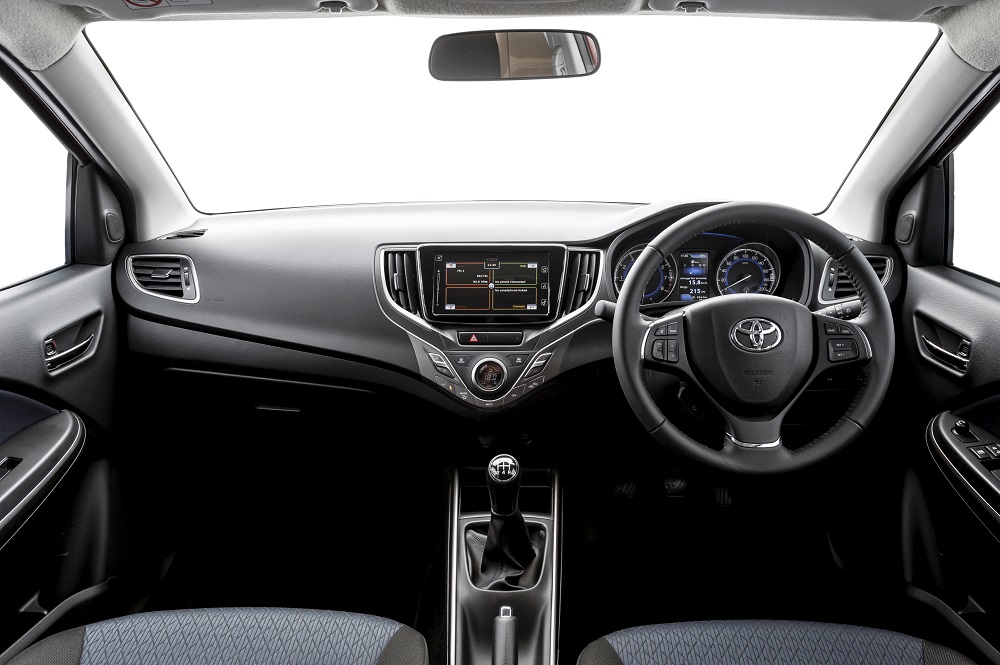Revived Toyota Starlet priced as replacement for Etios
Starlet name returns after a 21 year hiatus but touches down on South Africa shores for the first time

Toyota Starlet replaces Etios but is essentially a rebadged Suzuki Baleno.
With production of the Etios having ceased in March, Toyota has finally unveiled its successor on Monday. And the replacement looks familiar because it is familiar. The Starlet is in actual fact a rebadged Suzuki Baleno, which was the first born out of a 2016 marriage between the two Japanese car makers.
In terms of the car itself, the Starlet differentiates itself from the Baleno through a unique front grille and three grade levels compared to the two Suzuki offers. The Starlet’s base and mid spec offerings are priced lower than the comparative Baleno models with the mid spec Starlet also featuring alloy wheels, while 15 gigabytes of data will also be included as part of Toyota Connect.
Where the Baleno does hold the advantage is in terms of after sales backup, as Suzuki offers a five year/200 000 km warranty and 60 000km/four service plan to Toyota’s three year/100 000 km warranty and three-year/45 000 km service plan.
Like the Baleno, the Starlet will only be available with one engine derivative, the K14B 1.4-litre, four-cylinder petrol engine which produces 68 kW of power and 130 Nm of torque. These numbers are very similar to the performance of the outgoing Etios’ 1.5-litre mill, but is said to sip only 5.1-litres of fuel per 100km compared to the Etios’ 6.0L/100 km, with CO2 emissions being 18g/km lower at 120g/km.
Another big improvement on the Etios range is the addition of automatic transmission. The mid (Xs) and top spec (XR) models are available with a four-speed automatic gearbox alongside five-speed manual transmission, which is the sole offering on the base (Xi) model.
At R204 900 the Xi is R13 100 more expensive than the outgoing Etios entry level offering, but is does include a very decent list of standard specifications including ABS and EBD, vehicle stability control, brake assist, halogen headlamps, electric side mirrors, power steering, steering wheels switches, multi info display and Bluetooth connectivity.
The Xs features 16-inch alloy wheels with the option of an auto box, while the XR gets LED headlights, leather steering wheel, push start, a touchscreen infotainment system with Android Auto and Apple CarPlay, park distance control, reverse camera and cruise control.
Although the Starlet is claimed to offer greater safety than the Etios in terms of specifictions, the South Africa-bound model has not yet been tested for a NCAP rating. Apart from the Baleno, the other competitors the Starlet is up against are the Volkswagen Polo Vivo, the Ford Figo and Renault Sandero.
Toyota hopes to sell 500 Starlets a month, which is in stark contrast to Baleno sales, which has been very poor. Last month sales numbers, which is still reeling from the economic impacts of Covid-19, show that Suzuki sold only 33 Balenos. In the same period Toyota sold 415 Etios units.
The Etios Sedan will not get a replacement and Toyota hopes that the revamped Corolla Quest can bridge this gap for now. In terms of the Starlet range starting at a five-digit figure than the Etios line-up did, Toyota says that other models are making their way to South Africa “to bridge the gaps”.
PRICING
Starlet 1.4 Xi – R204 900
Starlet 1.4 Xs – R215 200
Starlet 1.4 Xs AT – R235 700
Starlet 1.4 Xr – R258 500
Starlet 1.4 Xr AT – R272 500
For more news your way, download The Citizen’s app for iOS and Android.









